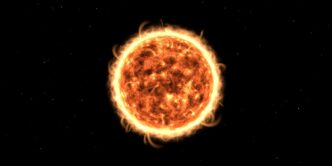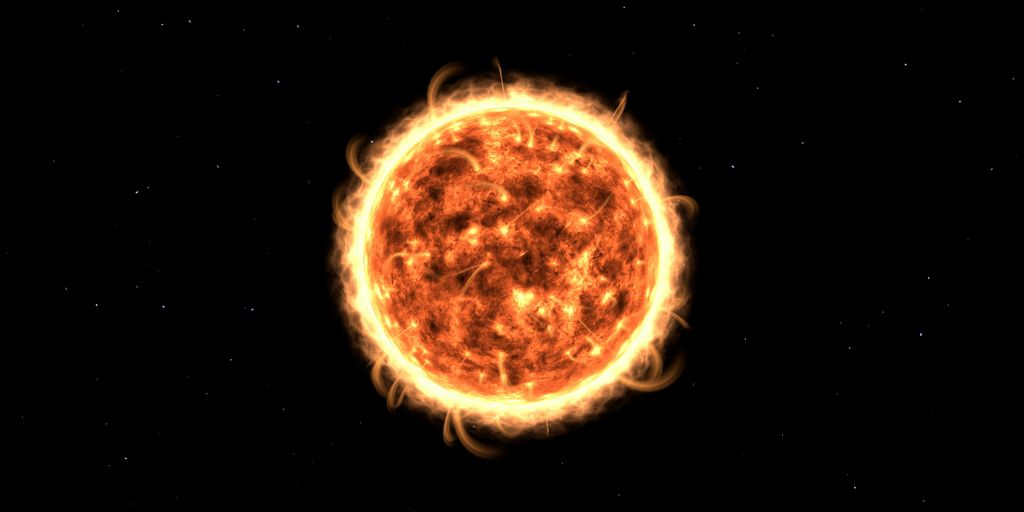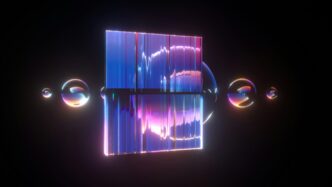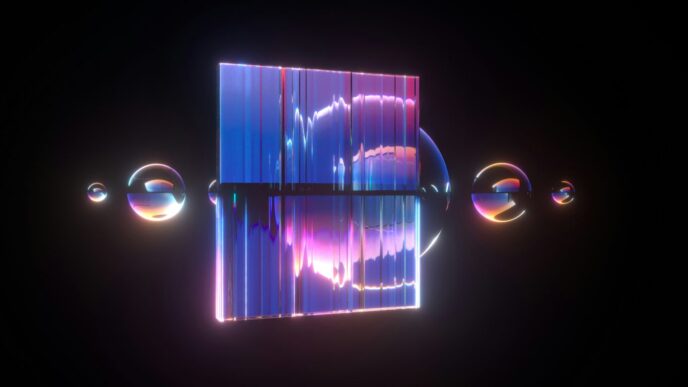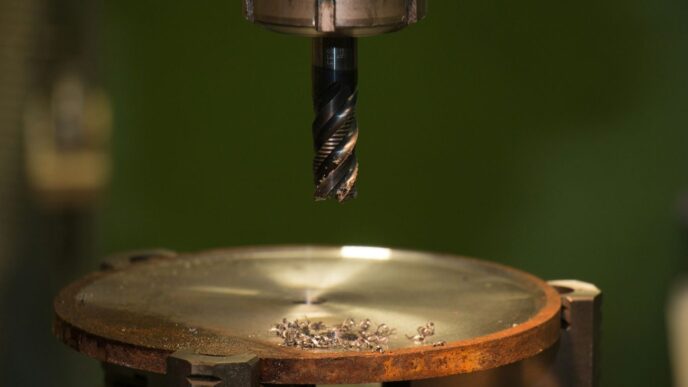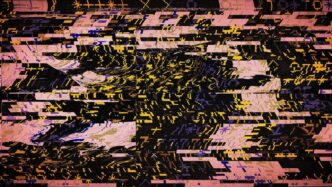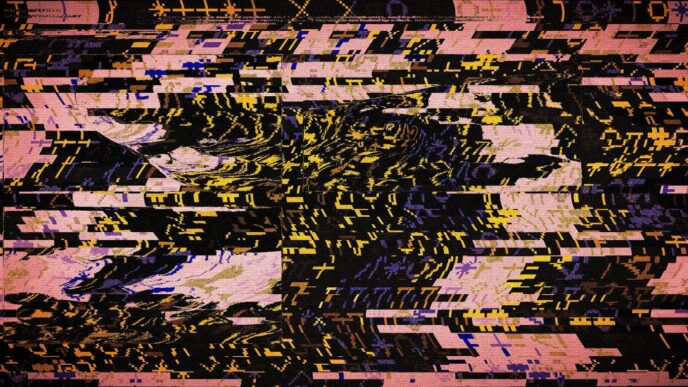Ever wondered what makes our Sun tick? It’s way more than just a big, bright ball in the sky. This star, the center of our solar system, has some truly wild secrets. We’re talking about things that might just change how you see that big yellow orb. Get ready to learn 3 fun facts about the sun that are pretty mind-blowing.
Key Takeaways
- The Sun makes its energy by smashing atoms together, not by burning like a fire.
- Light from the Sun takes a surprisingly long time to reach its surface from the core.
- The Sun’s outer atmosphere, called the corona, is huge and always changing.
- The Sun doesn’t actually burn, it fuses hydrogen into helium.
- Photons, tiny light packets, carry the Sun’s energy.
1. Nuclear Fusion
Okay, so the Sun is basically a giant nuclear reactor. I know, sounds like something out of a sci-fi movie, but it’s true! Deep inside the Sun’s core, a process called nuclear fusion is constantly happening. Think of it as a never-ending explosion, but, like, a controlled one.
Basically, it all starts with hydrogen atoms. They’re crammed together under so much pressure and heat that they start smashing into each other. When they collide, they don’t just bounce off; they fuse together to form helium atoms. This is where the magic happens. A tiny bit of mass gets converted into a HUGE amount of energy, following Einstein’s famous equation, E=mc². This energy is what powers the Sun and gives us light and heat here on Earth. It’s pretty wild to think about.
It’s not a quick process either. The energy created in the core takes millions of years to reach the surface! It’s like a super slow game of hot potato with photons. They bounce around, get absorbed, and then re-emitted over and over again. Eventually, they make their way out and zoom off into space as sunlight. So, next time you’re soaking up some rays, remember it’s energy that’s been traveling for millions of years!
To keep all this fusion going, the Sun’s core needs to be under immense pressure. This pressure comes from the weight of all the outer layers pressing down. It’s like the Sun is squeezing its own core to keep the fusion party going. Scientists are even looking at nuclear fusion’s potential as a clean energy source here on Earth, inspired by the Sun’s process. It’s a pretty cool concept, right?
Here’s a quick breakdown:
- Hydrogen atoms smash together.
- They fuse to form helium.
- A tiny bit of mass converts to a LOT of energy.
- Energy slowly makes its way to the surface.
And just to give you an idea of the scale, the Sun’s core pressure is about 250 billion times that of Earth’s! That’s a lot of squeeze!
2. Photons

Okay, so the Sun’s pumping out energy like crazy, but how does that energy actually get to us? The answer is photons! Think of them as tiny packets of light, constantly being created in the Sun’s core. It’s a wild ride for these little guys.
They’re not just cruising straight out, though. It’s more like a chaotic pinball game inside the Sun. They bounce around, get absorbed, and then re-emitted. It can take a photon a really long time – we’re talking potentially millions of years – to finally make its way from the core to the surface. Crazy, right?
Once they escape the Sun, they zoom through space at the speed of light, eventually reaching Earth and giving us that sweet, sweet sunshine. Photons are the reason we can see and feel the Sun’s energy. Without them, well, things would be pretty dark and cold around here.
Here’s a simplified breakdown of their journey:
- Born in the Sun’s core through nuclear fusion.
- Travel through the radiative zone, bouncing around like crazy.
- Eventually reach the convective zone.
- Escape the Sun’s surface and head out into space.
- Arrive at Earth (hopefully!).
It’s a pretty amazing process when you think about it. These tiny particles are responsible for so much!
3. Corona

Okay, so you know how the Sun looks like a giant ball of fire? Well, it’s got this crazy outer layer called the corona. It’s way bigger than you think, and it’s got some seriously weird properties. It’s like the Sun’s atmosphere, but way more intense. You can only really see it during a total solar eclipse, when it looks like a faint, glowing halo around the Sun. It’s pretty wild.
Temperature Mystery
Here’s where things get really strange. The Sun’s surface is hot, right? Like, thousands of degrees hot. But the corona? It’s millions of degrees hot! How does that even work? Usually, things get colder as you move away from a heat source, but the corona defies all logic. Scientists are still trying to figure out why it’s so incredibly hot. It’s one of the biggest mysteries about the Sun. Maybe Synhelion will revolutionize solar fuel production and help us understand this better.
Solar Flares and Coronal Mass Ejections
The corona is also the source of some pretty spectacular events, like solar flares and coronal mass ejections (CMEs). Solar flares are like giant explosions of energy and radiation. CMEs are huge bursts of plasma and magnetic fields that shoot out into space. These events can actually affect Earth, causing things like auroras (the Northern Lights) and disruptions to radio communications. It’s like the Sun is constantly burping out energy and stuff. These solar flares are no joke!
Coronal Holes
And get this – the Sun even has dark spots, just like us! They’re called coronal holes, and they’re areas where the corona is cooler and less dense. These holes are sources of high-speed solar wind, which can also affect Earth. It’s like the Sun has its own version of weather, and sometimes it’s not so good.
Here’s a quick rundown:
- The corona is the Sun’s outer atmosphere.
- It’s way hotter than the Sun’s surface.
- It’s the source of solar flares and CMEs.
- It has coronal holes that release high-speed solar wind.
Wrapping Things Up: Our Amazing Sun
So, there you have it! The Sun, our everyday star, is way more interesting than just a big, bright ball in the sky. It’s got these wild secrets, like how old its light really is when it finally hits your face, or how it’s not even yellow when you see it from space. Pretty cool, right? It just goes to show that even the stuff we see every single day can still surprise us. The universe is full of these kinds of things, and the Sun is a perfect example. It’s a good reminder to always keep looking up and wondering about what else is out there.
Frequently Asked Questions
What exactly is the Sun?
The Sun is a star, and like all stars, it’s a giant ball of hot gas. It’s mostly made of hydrogen and helium. It creates light and heat through a process called nuclear fusion, which happens deep inside its core.
How far away is the Sun from Earth?
The Sun is about 93 million miles away from Earth. This distance is so important that scientists even have a special name for it: one Astronomical Unit, or AU.
How hot is the Sun?
The Sun’s surface is incredibly hot, around 10,000 degrees Fahrenheit! If it weren’t for our planet’s ozone layer, we’d all get a serious sunburn in an instant.
What is the Sun’s core like?
The Sun’s core is where all the action happens. It’s where hydrogen atoms smash together to form helium, releasing a massive amount of energy. This energy then travels outwards, eventually reaching us as sunlight.
Why does the Sun look yellow or orange?
The Sun appears yellow or orange from Earth because of how light travels through our atmosphere. Shorter wavelengths of light, like blue and violet, scatter more, making the sky look blue. Longer wavelengths, like yellow and orange, make it to our eyes more directly.
How old is the Sun?
The Sun is about 4.6 billion years old. It’s considered a middle-aged star and is expected to continue shining for another 5 billion years or so.

